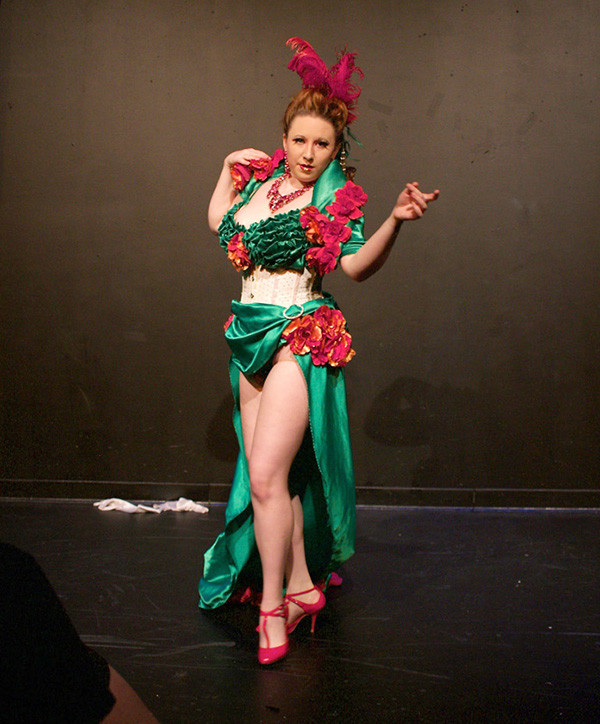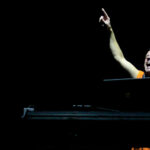Burlesque Dance, an art form rich in history and brimming with self-expression, often sparks curiosity and sometimes, misconceptions. What does it truly mean to be a professional in the world of burlesque dance? This article delves into the multifaceted nature of burlesque as a profession, drawing insights from Raven Gemini, a seasoned burlesque dancer from Chicago’s renowned Vaudezilla. Through her experiences, we explore the dedication, skills, and unique attributes that define a professional burlesque dancer in today’s vibrant performance landscape.
Defining Professionalism in Burlesque Dance
The term “professional dancer” can carry different connotations, particularly within the diverse realm of burlesque. While compensation is undoubtedly a component, Raven Gemini emphasizes that professionalism in burlesque extends far beyond simply getting paid. It’s deeply rooted in attitude and conduct, shaping a performer’s career both on and off stage.
Beyond the Paycheck: Attitude and Professional Behavior
Professionalism in burlesque manifests in numerous ways. It’s about maintaining respectful and prompt communication with producers, arriving prepared and on time for rehearsals and performances, and fostering a positive and collaborative atmosphere backstage. These elements are crucial for building a sustainable and respected career in the burlesque community. Given the intimate and collaborative nature of burlesque productions, especially in shared dressing rooms and backstage areas, being agreeable and considerate is paramount.
Navigating the Blurry Lines: Hobbyists and Professionals in Burlesque
One of the fascinating aspects of burlesque is the often indistinct line between hobbyists and professionals. The burlesque scene embraces performers from diverse backgrounds and commitment levels. Many talented individuals may perform for years without considering themselves professionals, sometimes accepting lower pay rates which, as Raven notes, is a point of contention within the burlesque community regarding the perceived devaluation of the art form. This spectrum also includes performers who prioritize enjoyment and spontaneity, perhaps even indulging in pre-show drinks, contrasting with the heightened responsibility and disciplined approach typically adopted by those who identify as professional burlesque dancers.
The Essential Training and Diverse Backgrounds of Burlesque Dancers
Just as any profession demands a degree of specialized training, so does burlesque dance. However, the path to professional burlesque is far from monolithic. Burlesque uniquely blends dance disciplines with vaudeville and theatrical elements, attracting individuals with varied backgrounds. While Raven Gemini herself possesses 11 years of formal dance training and a theater degree, many others enter burlesque without prior formal dance or performance experience. For those serious about pursuing burlesque professionally, some form of focused training becomes indispensable. This might encompass formal dance classes, personalized mentorship, or skill development in related areas like pole dancing, circus arts, gymnastics, or improvisational techniques. The specific type of training often depends on the individual’s artistic inclinations and the style of burlesque acts they aspire to create.
The Professional Landscape: Project-Based and Solo Burlesque Performances
Much of professional burlesque work operates on a project basis. Companies like Vaudezilla, where Raven performs regularly, often structure their shows around monthly themes or produce standalone, scripted performances. Other production models range from long-running scripted shows to single-evening events or monthly showcases with rotating casts.
Solo Work: The Heart of Burlesque Performance
Solo performances are the cornerstone of most burlesque shows. A typical burlesque event can feature anywhere from a handful of soloists to elaborate productions with over 15 performers, scripts, sets, and intricate costumes. Raven’s experience aligns with this, often performing in shows that include a few group numbers alongside eight to ten solo acts, all unified by a central theme. These themes can be broad, like “Roaring 20’s” or “Carnival,” or more specific, such as “Women in History.” Burlesque performers are typically the creative force behind their solo acts, retaining ownership of their choreography and costume designs, fostering a strong sense of artistic individuality. While solo work dominates, the occasional ambitious performer might even produce an entire one-person burlesque show, which presents unique challenges, especially given the striptease element inherent in burlesque. These solo shows might incorporate innovative techniques like alternating striptease and “reverse striptease” routines, or integrating video and non-strip-based dance to allow for costume changes and maintain audience engagement.
The Evolving Definition of a Professional Burlesque Dancer
The concept of a “professional dancer,” and indeed a professional burlesque dancer, is not static. It has broadened considerably over the past few decades, largely influenced by the advent of the internet and increased access to diverse media platforms. Today, a professional dancer could conceivably derive their entire income from online platforms like YouTube.
Burlesque’s Growing Recognition as a Professional Dance Discipline
The acceptance of burlesque as a legitimate and professional dance discipline is a relatively recent development. While professional burlesque performers certainly existed 50 years ago, they often occupied a more marginalized position within the broader entertainment industry. They might have been categorized as professional strippers, vaudeville performers, or even circus performers, but the specific recognition as “professional dancers” in the context of burlesque was less common due to societal constraints and perceptions.
Cultural Context, Assumptions, and the Burlesque Profession
Cultural perspectives significantly shape the understanding and acceptance of burlesque dance as a profession. Hailing from the American Midwest, Raven Gemini is acutely aware of the lingering stigma surrounding burlesque performance. Many performers in the region encounter challenges related to conservative family views or employers with traditional values, making it difficult to openly embrace their burlesque careers. Furthermore, audience engagement in the Midwest can be influenced by seasonal factors and strong local sports culture, sometimes making it harder to cultivate consistent audience support for burlesque shows compared to regions with a stronger emphasis on arts and culture like the East and West Coasts. These cultural nuances can impact the volume and type of work available, leading many Midwestern burlesque professionals to supplement their income with related creative endeavors while still maintaining their professional identity within burlesque.
Challenging Assumptions and Broadening Perspectives on Dance
One prevalent misconception Raven wishes to dispel is the narrow portrayal of the dance profession, often exemplified by stereotypes like those seen in films like Black Swan. Similarly, she critiques the often inaccurate depiction of burlesque in popular media, such as the movie Burlesque. Professional dance, and burlesque in particular, is far more diverse than these limited representations suggest. It’s not solely the domain of young, skinny, white women. Raven emphasizes the importance of recognizing and celebrating the multitude of talented performers from diverse backgrounds who are actively reshaping the narrative of dance. She encourages audiences to look beyond mainstream examples and seek out the rich tapestry of burlesque performers of color, citing luminaries like Jeez Louise, Po’Chop, Shanghai Pearl, and Sydni Devereaux. She also stresses the importance of honoring the pioneers of modern burlesque, such as Tiffany Carter, Judith Stein, Pillow, and Toni Elling, whose contributions and experiences have paved the way for contemporary performers. Raven cautions against superficial tributes, like simply recreating Josephine Baker’s iconic banana skirt act, urging instead for a deeper understanding of the historical and cultural context behind such performances. She underscores that artists are products of their societies, and understanding this context is crucial for appreciating their work.
Burlesque, Stripping, and Societal Perceptions
Finally, Raven addresses the often-held condescending view towards strippers within the broader dance community. She challenges the notion of a significant artistic divide between burlesque and stripping, arguing that the primary distinction lies in societal perception and economic realities. Club strippers often face greater societal stigma and emotional labor, yet are often financially compensated at a higher rate. Raven emphasizes that strippers invest just as much dedication and training in their craft as burlesque performers, advocating for a more respectful and nuanced understanding of their profession.
Conclusion: Celebrating the Professionalism and Diversity of Burlesque Dance
Raven Gemini’s insights offer a valuable perspective on the realities of being a professional burlesque dancer. It’s a profession defined by dedication, skill, artistic expression, and a strong sense of community. Professionalism in burlesque encompasses not only performance quality but also attitude, ethical conduct, and a commitment to the art form. As burlesque continues to evolve and gain broader recognition, it’s crucial to appreciate the diversity of its practitioners, challenge societal assumptions, and celebrate the rich artistic contributions of burlesque dancers from all backgrounds.
 Raven Gemini PROF
Raven Gemini PROF
Photo by Mike Licari


